Extract from The Guardian
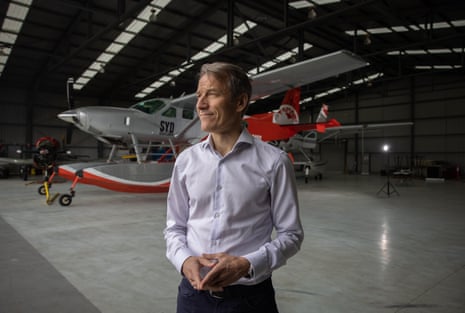
With net zero technologies for long-haul flights still far in the future, opportunities may lie with smaller operators flying shorter distances.
Mon 9 Jan 2023 01.00 AEDT
Last modified on Mon 9 Jan 2023 07.47 AEDTLess than two months later, Northern Territory Air Services, a scheduled airline and charter operator, put in an order to bring 20 of the aircraft to Australia with plans to fly passengers from Darwin to Uluru and Mount Isa.
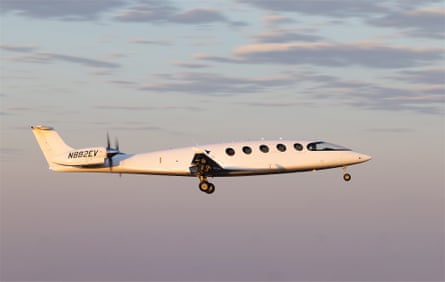
It’s a small sign that the winds may be changing for zero-emissions aviation in Australia, one of the most flight-dependent countries in the world.
Until recently there was no industry body making the case for change and even the Royal Flying Doctor Service, which operates the largest air fleet in the country and has traditionally been a hotbed of innovation, has no plans to acquire or develop electric aircraft.
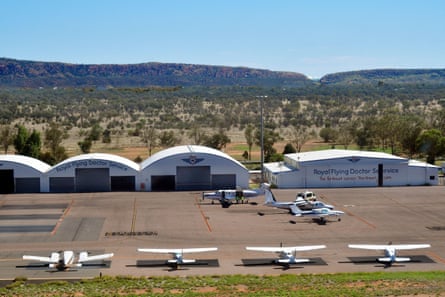
Yet away from the spotlight, a small crop of startups and aviation companies have been working on electric flight.
Among them is the charter company Sydney Seaplanes, which is planning to become the first all-electric airline in the country, and Bader Aero, a company developing a two-seater electric aircraft for use in pilot training and whose co-founder Barrie Rodgers set a record for the longest journey by electric aircraft – a seven-day, 18-stop flight across South Australia in June 2021.
In July the US company Wisk announced a memorandum of understanding with the Queensland Council of Mayors to help clear the way for its four-seater driverless eVTOLs (electric Vertical Take-Off and Landing aircraft) to operate as “safe, sustainable and scalable” air taxis in Brisbane by 2032, when the city hosts the Olympics.
Wisk’s sixth-generation aircraft looks like a scaled-up drone and will have a range of 144km, a cruising speed of up to 120 knots and can be charged in 15 minutes. Its wingspan stretches 15m and has six propellors mounted on each wing. Once aloft it flies like a small plane.
The price of SAF fuels is expected to fall, but it is expected to remain more expensive than those derived from fossil fuels. Despite claims by Qantas that SAF fuels are a “stepping stone” to net zero, there are concerns its investment will create a new refining industry that may hinder the adoption of technologies that eliminate the need to burn fuel at all.
Its biggest competitor, Virgin Australia, has a commitment to net zero carbon emissions by 2050, but a spokesperson said the company was held back by a lack of domestic refining for SAF and “electric aviation isn’t something we’re actively looking at for the time being”.
The main obstacle for long-haul operators is weight. Two decades before the Wright brothers’ first flight in 1903, a two-man crew took the airship La France on the first round trip by an aerial vehicle.It carried a 435kg zinc-chlorine battery on its 8km journey – the equivalent of hauling around a grand piano.
A modern battery this massive would still provide only a fraction of the power required for a commercial passenger aircraft with 150 or more seats.
In January, Carnegie Mellon University’s Prof Venkat Viswanathan wrote an article for Nature on the future of batteries in aviation which has become a call-to-arms for engineers in the industry. Viswanathan and his coauthors concluded that it was possible to make significant gains in battery chemistry for use in aviation by 2030 – but only if everything went right along the way. And even then, they would still not be capable of powering the largest passenger aircraft.
This means the future of electric aviation in Australia largely rests with short-haul operators.
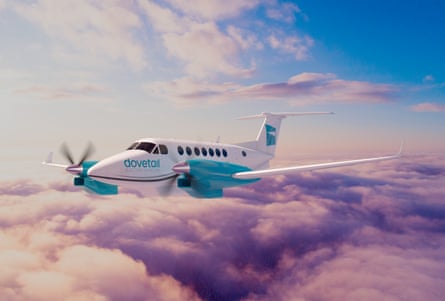
David Doral, the chief executive and founder of Dovetail Electric Aviation, says the current generation of batteries are not a good solution and green hydrogen technology is not far enough along in its development to power flights even by light aircraft.
“[For planes] it has to be hydrogen,” he says. “Only with batteries? You’re not going to fly very far.”
Doral says Australia will be “flying at two speeds” on zero-carbon aviation.
“On the one hand, for long-distance flying, we don’t have any good solution. From that side of the industry, I think, the future is a little bleak,” Doral says. “On the other hand, we have short haul-aviation – that is a very different story. We think there’s going to be a renaissance of smaller operators flying short distances.”
Rethinking air networks
Australia’s first passenger services developed after the first world war along mail routes such as Sydney to Brisbane, Charleville to Cloncurry and Geraldton to Derby. Greg Bamber, a professor at Monash University, says modern Australia wouldn’t exist without cheap, commercial passenger air travel enabled by the jet engine.
“It radically changed many things,” Bamber says. “[Aviation] became very important to Australia. We’re a big country, sparsely populated. No decent railways or even intercity motorways for that matter. We’re also a long way from the rest of the world.
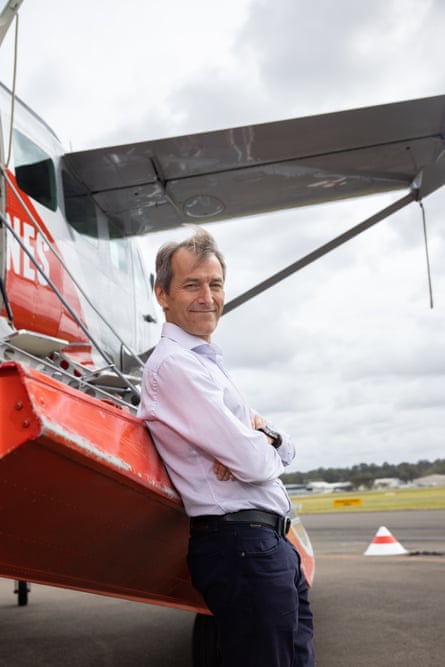
“The jet age facilitated the movement of large numbers of people, which was until then very expensive and difficult to do when people had to travel for six weeks on an ocean liner.”
Bamber says that as Australia confronts the reality of climate change, electric flight promises to change how people move and where they live, create new industries and force a rethink of how cities are designed.
“We’re not going to wake up tomorrow and have electric planes,” Bamber says. “But there is massive potential there. If we do have electric aircraft and if it’s coupled with vertical take off and landing, we may see airports much closer to city centres, making travel easier, and we’re going to see people work from more remote locations.”
If there is anyone who believes in the potential for short-haul electric flight to break the hub-and-spoke model between the major cities and regional areas, it’s John Sharp, the deputy chairman of Rex Airlines.
In August the company announced it planned a 2024 test flight in partnership with Dovetail. The test will involved retrofitting one of its existing Saab 340 aircraft with electric MagniX engines and a battery pack.
Should it go ahead, the flight will prove commercial electric flight is possible and prepare the ground for the regulatory steps needed to establish the industry.
“There’s the future of the whole concept of electrically powered aircraft at stake,” Sharp says. “If we can’t make this work, it’ll be a setback for people who hope to convert reasonably large aircraft to electric power.”
Success would be a “game-changer”, according to Sharp. As electric motors have fewer parts, they need less maintenance, make less noise and are less likely to go wrong.
Sharp says an airline like Rex could open more routes if it didn’t have to pay for fuel. “It makes the unviable, viable,” he says. “We’ll be at the bleeding edge worldwide on this. There’s a lot of hope, and a lot of expectations at risk – and clearly quite a bit of money.
“At the end of the day it’s all worthwhile, because the world’s calling on airlines to reduce their carbon emissions and we have to try and do something to meet that call.”
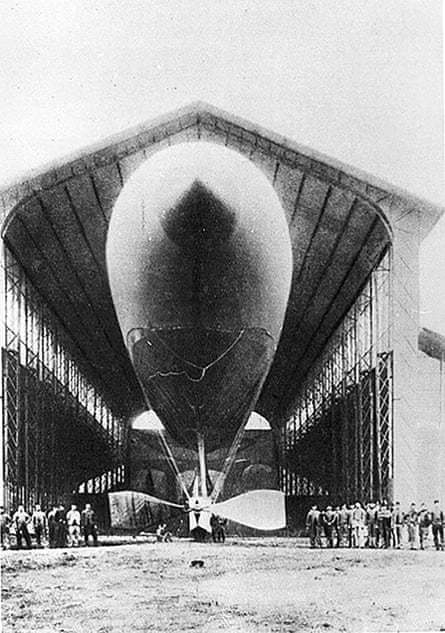
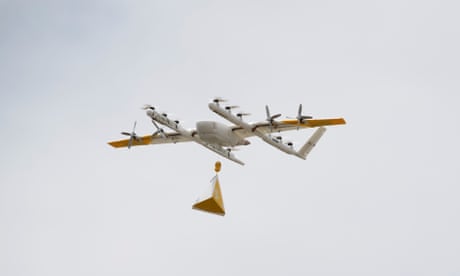
No comments:
Post a Comment